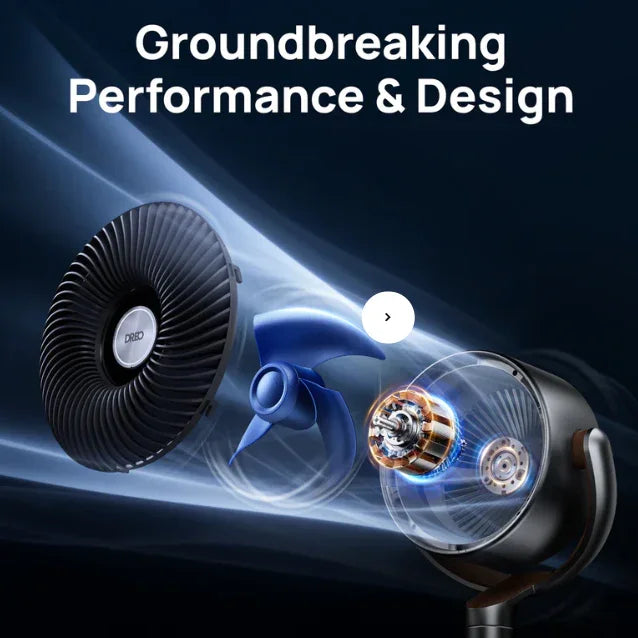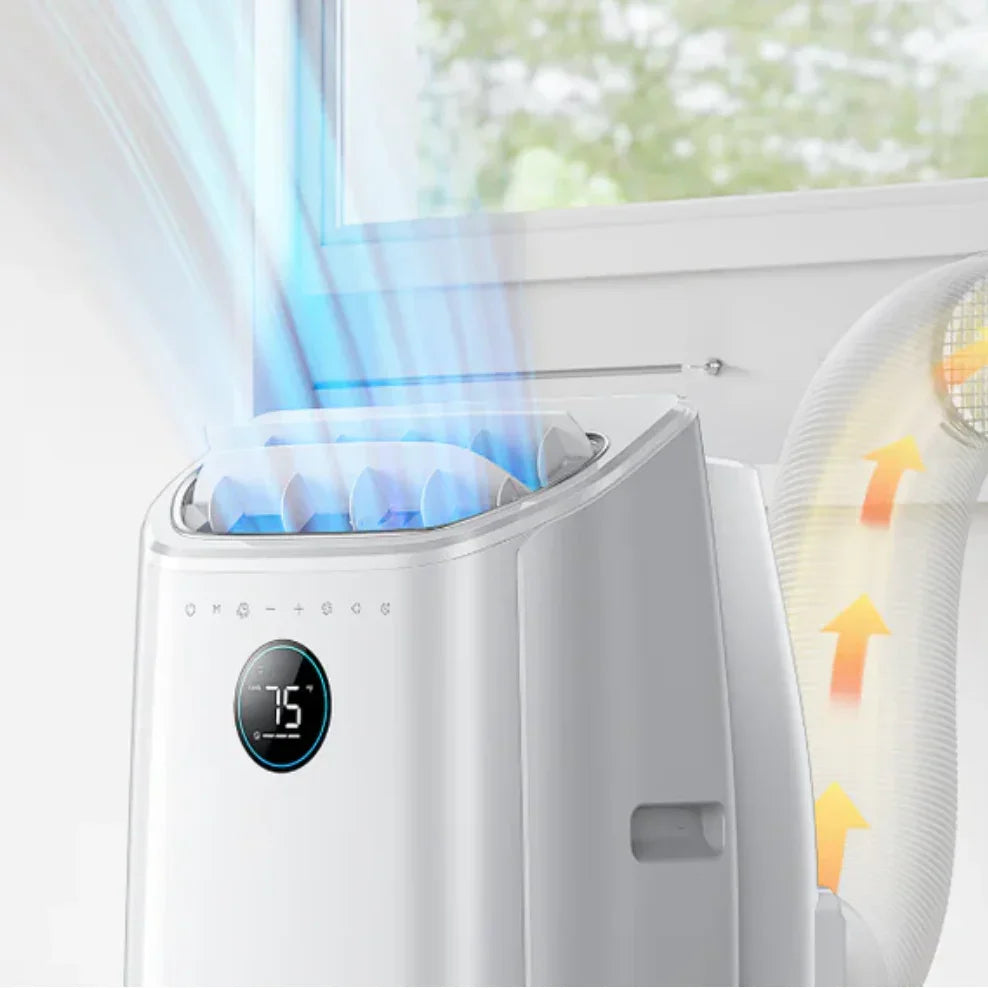When the temperature spikes, comfort quickly becomes priority number one. Portable air conditioners offer a flexible way to stay cool, especially in homes without central AC. But many people hesitate before plugging one in, concerned about the effect on their electricity bill.
So, how much energy do portable air conditioners actually use? The answer depends on how you use them, how they're designed, and how well they match your space. Let's unpack the key details and share a few tips to keep your home cool without putting a chill on your wallet.

Understanding Energy Use
Most mid-sized portable air conditioners use about 1.2 to 1.5 kWh of electricity per hour. If you run one for six hours a day, that adds up to 216 to 270 kWh per month. With U.S. electricity rates ranging from 7.18¢ to 42.34¢ per kWh, your monthly cost could land anywhere between $15.50 and $114.32.
That's just the baseline, though. Actual energy use can vary based on room size, insulation, outdoor temperature, and how (and when) you run the unit.
In smaller spaces like bedrooms or home offices, running the right-sized AC for just a few hours a day can make a noticeable difference. Oversizing wastes power. Undersizing makes the unit work harder. Either way, it shows up on your bill.
Why Sizing Matters More Than You Think
One of the most common mistakes is choosing a unit that's either too large or too small for the room. For spaces under 400 square feet, a 14,000 BTU (ASHRAE standard) unit like the DREO Portable Air Conditioner AC516S provides more than enough power, cooling quickly and evenly thanks to its parabolic airflow design. Its 30° angled outlet minimizes air loss, while the 35–80° louvre oscillation ensures even distribution, making it ideal for open layouts or living rooms that accumulate heat throughout the day.

In more compact spaces, like bedrooms or small home offices, the DREO Portable Air Conditioner AC318S (8,000 BTUs) delivers targeted cooling up to 16 feet away, without the added energy costs of an oversized unit. It's especially great for nighttime comfort. Quiet at just 45dB, yet powerful enough to lower the temperature fast so you can sleep soundly.

How You Use It Makes a Difference
Electricity consumption isn't just about the appliance - it's about your habits, too. Running a portable AC all day when no one's home easily wastes energy. Instead, look for units that offer scheduling through the app or voice control.
Using DREO portable air conditioners allows you to start cooling before you even arrive home, or adjust settings remotely, ensuring your space is comfortable exactly when needed, and saving energy when it isn't. This kind of smart, hands-off control helps reduce waste and maximizes efficiency with every kilowatt used
Quiet Cooling, Efficient Design
Another factor that impacts electricity use? The way the AC handles airflow and moisture.
Models like the DREO Portable Air Conditioner 515S/516S use auto-evaporating systems that recycle condensation instead of letting it build up. That means fewer interruptions, no need for manual draining, and more consistent performance, with less energy wasted from constant cycling.
You'll also notice how quietly these models run. At just 46dB, they don't compete with conversations or background music, making them perfect for use during remote meetings, quiet evenings, or overnight cooling.

A Few Smart Efficiency Habits
You don't need to rethink your home to reduce electricity use. A few practical steps can go a long way:
Block out direct sunlight with curtains or shades during the hottest parts of the day.
Close doors to unused rooms to keep cool air contained where you need it most.
Use fan mode on your DREO Portable Air Conditioner 515S during cooler evenings to maintain airflow without full cooling power.
Switch to dehumidifying mode on humid days - removing excess moisture helps the room feel cooler without lowering the temperature as much.
Keep the filters clean to ensure smooth operation and better air quality.
These habits, combined with an energy-efficient unit, can make a measurable difference in how much power your portable AC consumes over time.

Final Takeaway
Portable air conditioners do use electricity, but they don't have to be energy hogs. When matched to the right room, used with intention, and supported by modern features like scheduling, smart drainage, and quiet operation, they can be both effective and efficient.
Whether you're cooling a compact bedroom or a wide-open living space, DREO portable air conditioning units make it easier to find the balance between comfort and control. And when used wisely, that balance shows up not just in cooler rooms, but in more manageable energy bills.



